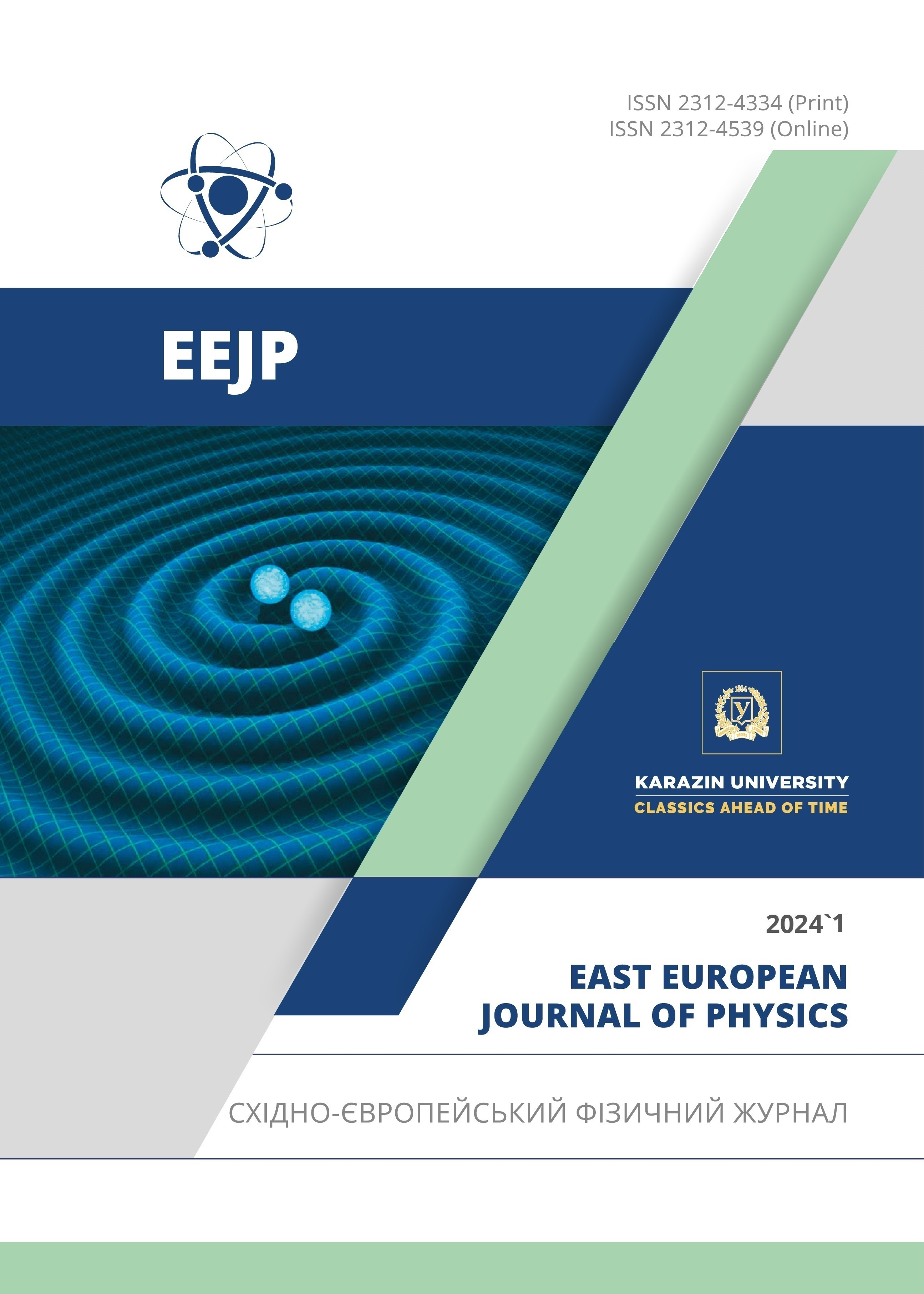Nonclassicalities of the Superposition State of Coherent and Photon-Added-Coherent State
Abstract
The nonclassical properties of the hybrid coherent state (HCS), which is the superposition state of the coherent state and photon-added coherent (PAC) state, is investigated analytically. We evaluated the photon number statistics, the Wigner-Yanase skew information, the Mandel Q factor and the quadrature squeezing of the HCS to quantify its nonclassicality. This superposition state exhibits more nonclassical properties than the PAC state and even the superposition state of coherent state and single-photon-added coherent (SPAC) state. We reported that the addition of more photons to the PAC state part of the HCS generally quantifies more nonclassicalities. The nonclassical properties of the HCS also depend on the amplitudes of coherent state and the PAC state in the HCS.
Downloads
References
G.S. Agarwal, and K. Tara, Phys. Rev. A, 43, 492 (1991). https://doi.org/10.1103/PhysRevA.43.492
A. Zavatta, S. Viciani, and M. Bellini, Science, 306, 660 (2004). https://www.science.org/doi/10.1126/science.1103190
E. P. Mattos, and A. Vidiella-Barranco, Phys. Rev. A, 104, 033715 (2021). https://doi.org/10.1103/PhysRevA.104.033715
E. P. Mattos, and A. Vidiella-Barranco, J. Opt. Soc. Am. B, 39, 1885 (2022). https://doi.org/10.1364/JOSAB.450622
Q. Hu, T. Yusufu, and Y. Turek, Phys. Rev. A, 105, 022608 (2022). https://doi.org/10.1103/PhysRevA.105.022608
S. K. Giri, B. Sen, C. H. Raymond Ooi, and A. Pathak, Phys. Rev. A, 89, 033628 (2014). https://doi.org/10.1103/PhysRevA.89.033628
S. K. Giri, B. Sen, A. Pathak, and P. C. Jana, Phys. Rev. A, 93, 012340(2016). https://doi.org/10.1103/PhysRevA.93.012340
S. K. Giri, K. Thapliyal, B. Sen, and A. Pathak, Physica A, 466, 140 (2017). https://doi.org/10.1016/j.physa.2016.09.004
P. V. P. Pinheiro, and R. V. Ramos, Quant. Infor. Proc. 12, 537 (2013). https://doi.org/10.1007/s11128-012-0400-0
D. Wang, M. Li, F. Zhu, Z-Q. Yin, W. Chen, Z-F. Han, G-C. Guo, and Q. Wang, Phys. Rev. A, 90, 062315 (2014). https://doi.org/10.1103/PhysRevA.90.062315
Q. Dai, and H. Jing, Inter. J. Theor. Phys. 47, 2716 (2008), https://doi.org/10.1007/s10773-008-9710-5
D. Braun, P. Jian, O. Pinel, and N. Treps, Phys. Rev. A, 90, 013821 (2014). https://doi.org/10.1103/PhysRevA.90.013821
S. A. Podoshvedov, Phys. Rev. A. 79, 012319 (2009), https://doi.org/10.1103/PhysRevA.79.012319
J-J. Chen, C-H. Zhang, J-M. Chen, C-M. Zhang, and Q. Wang, Quant. Infor. Proc. 19, 198 (2020). https://doi.org/10.1007/s11128-020-02695-5
S. U. Shringarpure, and J. D. Franson, Phys. Rev. A, 100, 043802 (2019). https://doi.org/10.1103/PhysRevA.100.043802
J. T. Francis, and M. S. Tame, Phys. Rev. A, 102, 043709 (2020). https://doi.org/10.1103/PhysRevA.102.043709
Y. Turek, N. Aishan, and A. Islam, Phys. Scr. 98, 075103 (2023). https://iopscience.iop.org/article/10.1088/1402-4896/acdcca
C. C. Gerry, and P. L. Knight, Introductory Quantum Optics, (Cambridge, New York, 2005), pp. 150-165.
L. Mandel, Opt. Lett. 4, 205 (1979). https://doi.org/10.1364/OL.4.000205
S. Luo, and Y. Zhang, Phys. Rev. A, 100, 032116 (2019). https://doi.org/10.1103/PhysRevA.100.032116
S. Luo, Phys. Rev. Lett. 91, 180403 (2003), https://doi.org/10.1103/PhysRevLett.91.180403
S. Luo, and Y. Sun, Phys. Rev. A, 98, 012113 (2018). https://doi.org/10.1103/PhysRevA.98.012113
S. Luo, and Y. Sun, Phys. Rev. A, 96, 022130 (2017). https://doi.org/10.1103/PhysRevA.96.022130
Copyright (c) 2024 Sandip Kumar Giri

This work is licensed under a Creative Commons Attribution 4.0 International License.
Authors who publish with this journal agree to the following terms:
- Authors retain copyright and grant the journal right of first publication with the work simultaneously licensed under a Creative Commons Attribution License that allows others to share the work with an acknowledgment of the work's authorship and initial publication in this journal.
- Authors are able to enter into separate, additional contractual arrangements for the non-exclusive distribution of the journal's published version of the work (e.g., post it to an institutional repository or publish it in a book), with an acknowledgment of its initial publication in this journal.
- Authors are permitted and encouraged to post their work online (e.g., in institutional repositories or on their website) prior to and during the submission process, as it can lead to productive exchanges, as well as earlier and greater citation of published work (See The Effect of Open Access).








